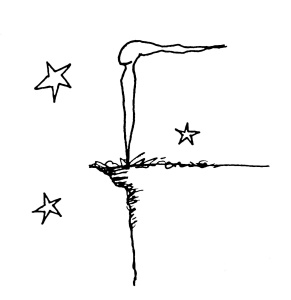
The news reports are always lurking at the edges of my mind; another white policeman kills an unarmed black man and no charges are filed.
What does that have to do with me? I am a good person. Kind. Big hearted. My intent, even as a child, was to treat everyone equally. I don’t know anything about the white policemen who have killed unarmed black men. Some, no doubt, are openly racist. But many, I presume, may be just like me—filled with good intent and thoughts of equanimity.
Unfortunately, none of us was born in a vacuum. The racial values and assumptions of centuries of U.S. and European culture were fed to us with our mother’s milk and our ABCs: White-skinned people are better/smarter/less dangerous/more deserving than black-skinned people.
Growing up in my moderate Texas household in the 1950s and 1960s, the black/white divide was never stated that bluntly nor articulated with such obvious prejudice. Yet my world was filled with upstanding white people—professionals, teachers, authors, neighbors and church members—and unknown black people—often either working in our homes or yards, reportedly breaking the law on the nightly news or rioting somewhere far away in civil rights protests. My limited experience led me to feel safer around my people, white people.
Until I identify and extricate these shards of racism buried deep in my bones, they will emerge in times of stress. Even when my sight is focused on justice and my vision is bold, these deep-seated, cultural biases don’t magically evaporate. I, and we, must wake up to the big and small ways that prejudice is infecting our actions and beliefs.
When racism shows up in me, it can break relationships, put black friends in jeopardy or cause deep hurt. When it shows up in white policemen armed with guns, these internalized racial fears too often turn deadly. When it shows up in grand juries and court trials, justice can’t be served.
We can no longer pretend that racism, conscious or unconscious, is an occasional or individual problem as too many more black men than white men are either killed by police or incarcerated. The underbelly of systemic racism has once again been exposed.
People ask me, often softly, “Do you have any hope?”
Yes, I do.
I’ve spent decades diving into the intersection of my life and the “Big Topics,” as I call them, as they cut through our world. My family and upbringing was rather ordinary, even for a white girl. No alcoholism, drugs or violence. No words of racial hatred. No overt sexism; my grandmothers and mother were all strong, independent women. Nevertheless, I finally noticed that I was asleep to the ways that race, class and gender—the big “isms”—were present and active in the corners of my mind or in a reactive moment.
I knew I had to share these discoveries as small steps toward having our society come to grips with the kind of internal racism that’s hard to acknowledge, which is what I did in Big Topics at Midnight: A Texas Girl Wakes Up to Race, Class, Gender and Herself. I wanted my story to expand reader’s awareness of a bigger and more diverse reality of themselves and the world around them. When we awaken, I believe that we can see more clearly the ways that our actions—especially under stress—can be brought into alignment with our hearts and values.
Asleep and denying their presence, our unconsciously held beliefs are extremely dangerous in times of stress. Likewise, wallowing for too long in shame or guilt will derail change.
The shards of generations and millennia of racism, classism and sexism do not have to remain in our psyches. We can open them up, look at them with clear eyes, and change.
I have hope, but not because the changes required are quick or easy.

For the last twelve years, I have been part of an organization, Be Present, Inc., that gathers diverse groups across race, class, age and gender identity. There I learned to build strong partnerships due to my commitment to notice, examine, then shift subtle or overt shards of racism (or any “ism”) that emerge in the middle of our work together. As a result, I am beginning to know myself and others separate from, and outside of, the wounds—historical and present—that have infected and divided us all.*
My hope lies in the fact that more and more of us are waking up to our nation’s horrible generational legacy of racism and taking the necessary steps to remove these shards from our bones and institutions.
It is possible to make these profound changes. I’ve seen the impact of this transformation many times. Even while the heartbreaking violence grows in our streets and in the courts, something new and better is emerging. We must, as a country, wake up because it’s too near midnight to stay asleep.
As American cultural anthropologist Margaret Mead said, “Never doubt that a small group of thoughtful, committed citizens can change the world; indeed, it’s the only thing that ever has.”
*Check here for the more information about the Be Present Empowerment Model, my primary practice that has taught me how to bring my full, white-skinned self into our multi-colored world.
This blog was originally published by The Broad Side.